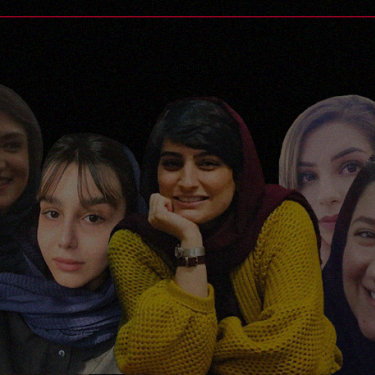An unprecedented number of women journalists are now detained in Iran

As the Iranian regime continues its crackdown on the protests initiated by Mahsa Amini's death, almost half of all newly arrested journalists are women, including two who are facing the death penalty. Reporters Without Borders (RSF) calls for immediate action to secure their unconditional release.
“The increasing detention of female journalists symbolically reveals the Iranian regime's intention to systematically silence women's voices. RSF is deeply concerned about the fate of these journalists who risk paying a very high price, including the death penalty, for having had the courage to reveal a truth that the authorities seek to stifle. They must be released immediately and unconditionally.
Since the start of the protests in reaction to Mahsa Amini's death on 16 September, at least 42 journalists have been arrested throughout Iran. So far, eight of them have been released and 34 are still detained, among them 15 women journalists. There are now five times more women imprisoned than before the protests started. The number of detained female journalists has never been so high. Even during the widespread protests of 2019 in Iran, only four out of 10 detained journalists were women.
“Women are the pioneers of the ideal revolution for gender equality and have been in the front line for the transition from theocracy to a secular democracy. They are not afraid of the risk of arrest, torture and even death, they report the news immediately.
Among the women journalists detained, two cases are of particular concern. Nilufar Hamedi and Elahe Mohammadi, the first journalists who draw public attention to Mahsa Amini's death, have now been imprisoned for more than a month and have been charged with accusations that could result in the death penalty as Iranian authorities indicted them on charges of “propaganda against the system and conspiracy to act against national security.” These accusations caused a strong reaction by more than 500 journalists and media activists in Iran, who wrote a courageous appeal for the release of their detained colleagues.
Nilufar Hamedi reported for Shargh newspaper from the hospital where Mahsa Amini was in a coma before she died. The journalist had been arrested on 20 September. Elahe Mohammadi, a journalist for the Ham Mihan newspaper, went to Amini's hometown of Saqez (in northwest Iran's Kurdistan region) to report on her funeral, which turned into one of the first protest actions. She was detained on 29 September.
Another journalist who tried to reveal the truth about Mahsa Amini’s death was also arrested on 4 November. Nazila Maroufian, a reporter for the Rouydad24 news website, published an interview with Mahsa Amini's father on Mostaghel news website, in which he denied that his daughter had any serious health issues. The interview was titled: “They are lying.” Even though the piece was later removed, Nazila Maroufian was arrested and transferred to Evin prison.
Before the new wave of protests and repression, three women journalists were already behind bars in Iran, including Narges Mohammadi, who has been jailed since 16 November 2021 on propaganda and defamation charges. With a total of 48 journalists now detained, including 18 female journalists, Iran confirms to be the third largest jailer of journalists in the world, after China and Myanmar.
Iran has long held one of the world’s worst press freedom rankings, at 178th out of 180 countries in RSF’s 2022 World Press Freedom Index.
